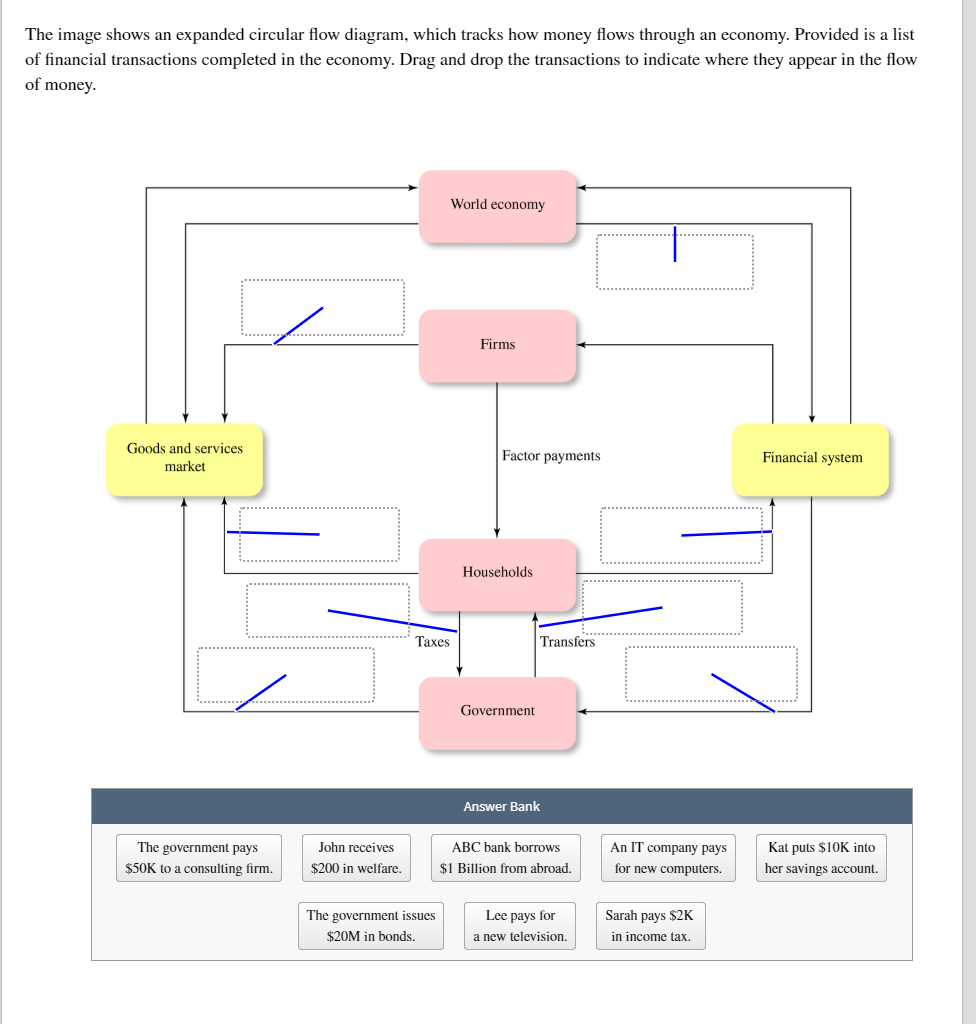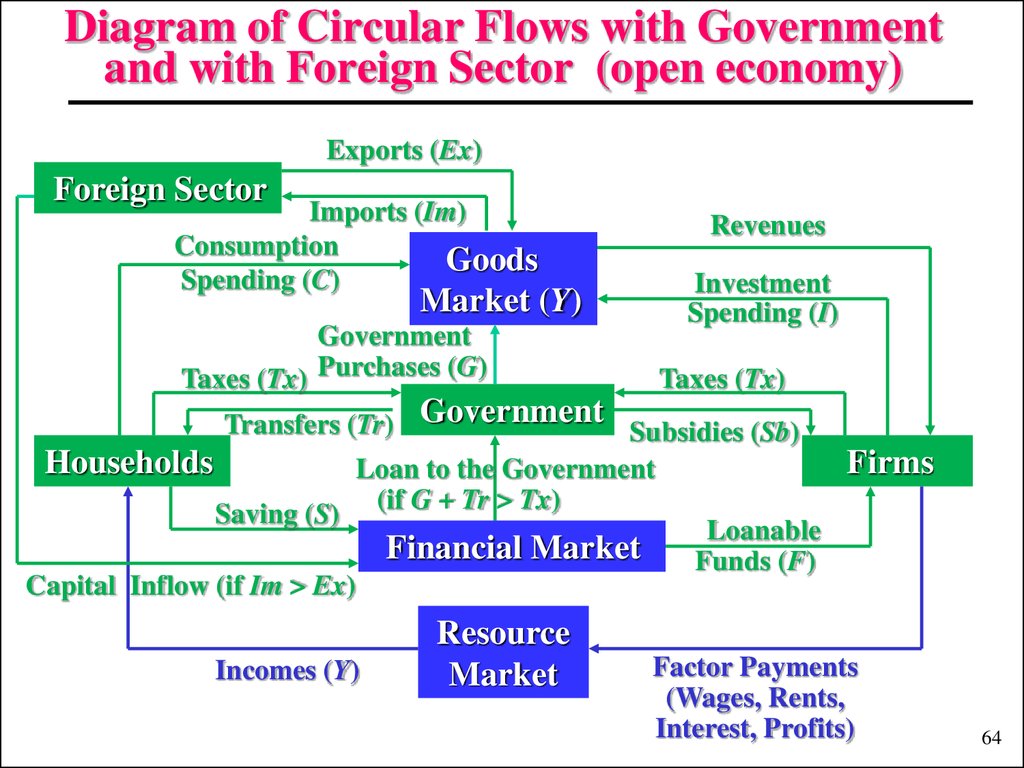

In these markets, households provide the inputs that firms use to produce goods and services. The circular-flow diagram offers a simple way of organizing all the economic transactions that occur between households and firms in the economy. In the markets for the factors of production, households are sellers, and firms are buyers.

In particular, households buy the output of goods and services that firms produce. In the markets for goods and services, households are buyers, and firms are sellers. Households and firms interact in two types of markets. Households own the factors of production and consume all the goods and services that the firms produce. These inputs are called the factors of production. Firms produce goods and services using inputs, such as labor, land, and capital (buildings and machines). In this model, the economy is simplified to include only two types of decision makers-firms and households. In other words, we need a model that explains, in general terms, how the economy is organized and how participants in the economy interact with one another.įigure 1 presents a visual model of the economy called a circular-flow diagram.

To understand how the economy works, we must find some way to simplify our thinking about all these activities. The economy consists of miltions of people engaged in many activities-buying, selling, working, hiring, manufacturing, and so on. OUR FIRST MODEL: THE CIRCULAR FLOW DIAGRAM


 0 kommentar(er)
0 kommentar(er)
